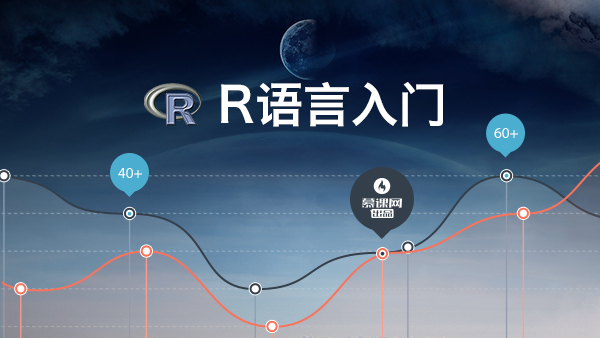本文转自个人微信公众号
Flink 里时间包括Event Time、Processing Time 和 Ingestion Time 三种类型。
Processing Time:Processing Time 是算子处理某个数据时到系统时间。Processing Time 是最简单的时间,提供了最好的性能和最低的延迟,但是,在分布式环境中,Processing Time具有不确定性,多次运行的结果可能出现不一致。
Ingestion Time:Ingestion Time 是数据进入Flink 集群的时间,Source Operator 给数据加上时间戳。
Event Time:Event Time是数据在设备上产生时的时间,一般都嵌入到了数据记录中,相比于其他两种,Event Time 更具有业务意义, 取决于数据而不是系统。举例来说,重跑历史数据时,如果根据Processing Time 重跑,可能会造成结果不一致,而根据Event Time 重跑,结果是一致的。
由于Event Time 更能表达业务需求,所以,Event Time 应用更为广泛,但使用Event Time 也会存在一些问题。
1. 问题:乱序与延迟
乱序与延迟是实时系统中最常见的问题。比如说,在实时系统中广泛使用的消息队列,很难保证端到端的全局有序,从而导致进入 Flink 集群的数据是无序的;然后,由于洪峰的存在,比如秒杀或者重跑历史数据,很容易造成数据在消息队列堆积,从而造成延迟。
2. 解决方案
采用Event Time的流计算处理器,需要评估Event Time进展,比如当窗口结束时,需要通知 Operator 关闭窗口并开始计算。
2.1 Watermark
Apache Flink 采用watermark来处理,watermark 带有一个时间戳,作为数据流的一部分随数据流流动,Watermark(t) 表示event time 小于等于 t 的都已经到达,如下图所示。

flink-watermark.png
2.1.1 生成Watermark
2.1.1.1 方法1 Source 中生成
在source中,直接生成watermark,不过,source生成的watermark 优先级比较低,可以被方法2中的覆盖掉。具体的定义在一篇讲Source & Sink 时详述。
2.1.1.2 方法2 Timestamp Assigner
Timestamp Assigner 输入数据流,产生一个新的数据流,新数据流带有产生的watermark,如果原数据流本身就有watermark,则覆盖原watermark。Timestamp Assigner 一般紧跟在source后,但不是必须的,但是必须在第一个event time 操作前。
Timestamp Assigner 分两种:
Periodic: 周期性(一定时间间隔或一定数据量)产生watermark。
Punctuated: 间断的 watermark,一般根据event 决定是否产生新watermark。
Periodic
直接看源码(注释太明白,不舍得删)。
/**
* A {@code TimestampAssigner} assigns event time timestamps to elements.
* These timestamps are used by all functions that operate on event time,
* for example event time windows.
*
* <p>Timestamps are represented in milliseconds since the Epoch
* (midnight, January 1, 1970 UTC).
*
* @param <T> The type of the elements to which this assigner assigns timestamps.
*/public interface TimestampAssigner<T> extends Function { /**
* Assigns a timestamp to an element, in milliseconds since the Epoch.
*
* <p>The method is passed the previously assigned timestamp of the element.
* That previous timestamp may have been assigned from a previous assigner,
* by ingestion time. If the element did not carry a timestamp before, this value is
* {@code Long.MIN_VALUE}.
*
* @param element The element that the timestamp will be assigned to.
* @param previousElementTimestamp The previous internal timestamp of the element,
* or a negative value, if no timestamp has been assigned yet.
* @return The new timestamp.
*/
long extractTimestamp(T element, long previousElementTimestamp);
}/**
* The {@code AssignerWithPeriodicWatermarks} assigns event time timestamps to elements,
* and generates low watermarks that signal event time progress within the stream.
* These timestamps and watermarks are used by functions and operators that operate
* on event time, for example event time windows.
*
* <p>Use this class to generate watermarks in a periodical interval.
* At most every {@code i} milliseconds (configured via
* {@link ExecutionConfig#getAutoWatermarkInterval()}), the system will call the
* {@link #getCurrentWatermark()} method to probe for the next watermark value.
* The system will generate a new watermark, if the probed value is non-null
* and has a timestamp larger than that of the previous watermark (to preserve
* the contract of ascending watermarks).
*
* <p>The system may call the {@link #getCurrentWatermark()} method less often than every
* {@code i} milliseconds, if no new elements arrived since the last call to the
* method.
*
* <p>Timestamps and watermarks are defined as {@code longs} that represent the
* milliseconds since the Epoch (midnight, January 1, 1970 UTC).
* A watermark with a certain value {@code t} indicates that no elements with event
* timestamps {@code x}, where {@code x} is lower or equal to {@code t}, will occur any more.
*
* @param <T> The type of the elements to which this assigner assigns timestamps.
*
* @see org.apache.flink.streaming.api.watermark.Watermark
*/public interface AssignerWithPeriodicWatermarks<T> extends TimestampAssigner<T> { /**
* Returns the current watermark. This method is periodically called by the
* system to retrieve the current watermark. The method may return {@code null} to
* indicate that no new Watermark is available.
*
* <p>The returned watermark will be emitted only if it is non-null and its timestamp
* is larger than that of the previously emitted watermark (to preserve the contract of
* ascending watermarks). If the current watermark is still
* identical to the previous one, no progress in event time has happened since
* the previous call to this method. If a null value is returned, or the timestamp
* of the returned watermark is smaller than that of the last emitted one, then no
* new watermark will be generated.
*
* <p>The interval in which this method is called and Watermarks are generated
* depends on {@link ExecutionConfig#getAutoWatermarkInterval()}.
*
* @see org.apache.flink.streaming.api.watermark.Watermark
* @see ExecutionConfig#getAutoWatermarkInterval()
*
* @return {@code Null}, if no watermark should be emitted, or the next watermark to emit.
*/
@Nullable
Watermark getCurrentWatermark();
}可以看出,自定义的Assigner 需要实现AssignerWithPeriodicWatermarks 接口,其中getCurrentWatermark 产生新的watermark,如果返回非空且大于原来的watermark,则生成了新的watermark;另外,extractTimestamp 用于给数据加上时间戳,这个时间戳在后续所有基于event time的计算中使用。以下面的代码为例,假设数据可能乱序,但最多延迟3.5秒。
/**
* This generator generates watermarks assuming that elements arrive out of order,
* but only to a certain degree. The latest elements for a certain timestamp t will arrive
* at most n milliseconds after the earliest elements for timestamp t.
*/class BoundedOutOfOrdernessGenerator extends AssignerWithPeriodicWatermarks[MyEvent] { val maxOutOfOrderness = 3500L // 3.5 seconds
var currentMaxTimestamp: Long = _ override def extractTimestamp(element: MyEvent, previousElementTimestamp: Long): Long = {
element.getCreationTime()
} override def getCurrentWatermark(): Watermark = { // return the watermark as current highest timestamp minus the out-of-orderness bound
new Watermark(currentMaxTimestamp - maxOutOfOrderness)
}
}ExecutionConfig.setAutoWatermarkInterval(...) 定义了watermark产生的时间间隔,单位是毫秒。
Punctuated
根据event来确定是否需要产生新的watermark,定义Punctuated Assigner 需要实现AssignerWithPunctuatedWatermarks接口,包括函数extractTimestamp,checkAndGetNextWatermark,其中extractTimestamp 同Periodic Assigner,首先调用;然后调用checkAndGetNextWatermark ,用于确定是否需要产生新的watermark,当checkAndGetNextWatermark 产生一个非空且大于上一个watermark时就产生了新的watermark。举个例子如下:
class PunctuatedAssigner extends AssignerWithPunctuatedWatermarks[MyEvent] { override def extractTimestamp(element: MyEvent, previousElementTimestamp: Long): Long = {
element.getCreationTime
} override def checkAndGetNextWatermark(lastElement: MyEvent, extractedTimestamp: Long): Watermark = { if (lastElement.hasWatermarkMarker()) new Watermark(extractedTimestamp) else null
}
}2.1.2 Flink 预定义Timestamp Assigner
为了便于使用,Apache Flink 提供了两种预定义的Timestamp Assigner:
AscendingTimestampExtractor: 这是
AssignerWithPeriodicWatermarks的最简单的情况,数据流是按时间戳升序到达Flink的,这种情况下,数据里的时间戳就可以作为watermarkval withTimestampsAndWatermarks = stream.assignAscendingTimestamps( _.getCreationTime )
BoundedOutOfOrdernessTimestampExtractor: 这也是一个
AssignerWithPeriodicWatermarks的实现,表示已知数据的最大延迟。val withTimestampsAndWatermarks = stream.assignTimestampsAndWatermarks(new BoundedOutOfOrdernessTimestampExtractor[MyEvent](Time.seconds(10))( _.getCreationTime ))
这两种Timestamp Assigner 一是可以直接使用,二是可以作为学习的代码示例。
Latency
即使采用watermark 技术,对于watermark(t) 也可能存在时间戳小于t却没有到达的数据,在现实中,延迟可能是无上限的,这种情况下,不可能无限等待下去;另外,即使延迟有限,但如果让watermark 延迟太多也不好,因为延迟太多可能就失去了实时的意义。所以,必须要作出选择。
默认情况下,延迟超过watermark的数据会被丢弃,但 Flink 允许在窗口操作上指定最大延迟,我们用N表示支持的最大延迟(N默认为0),对于窗口 [start_time, end_time)] ,数据迟于 watermark(t) 但先于end_time+N到达的,仍然会添加到窗口中再次触发计算。为了支持这种情况,Flink 需要保持这个窗口state 到时间戳 end_time + N ,当时间到达end_time+N后,Flink 删除窗口和state。
stream .keyBy(<key selector>) .window(<window assigner>) .allowedLateness(<time>) .<windowed transformation>(<window function>)
3. 总结
本文主要介绍Flink 中Event Time 和Watermark。由于Event Time 具有业务意义,且具有确定性,所以Event Time 应用广泛,但由于在现实中存在延迟和乱序问题,Flink 采用了 Watermark 来解决这个问题。
作者:此星爷非彼星爷
链接:https://www.jianshu.com/p/84310eaf59fa

 随时随地看视频
随时随地看视频




